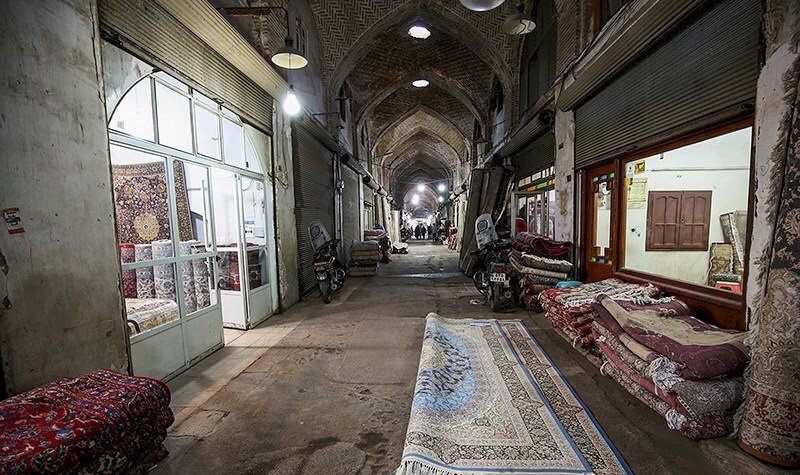Flooring project begins at historical bazaar of Qazvin

TEHRAN – A flooring project is underway at Qeisarieh covered passage of the historical bazaar of Qazvin, a local tourism official has said.
To preserve the historical structure and to replace worn-out materials, the project is being carried out in collaboration with the shop owners, Ehsan Nurani explained on Wednesday.
Qazvin was once the capital of the mighty Persian Empire, under Safavids, from 1548 to 98. It is a major tourist destination with a wonderfully restored caravanserai-turned-arts precinct, some quirky museums, and a handful of decent eating options. For most travelers, Qazvin is also primarily the staging point for excursions to the famous Castles of the Assassins and trekking in the sensational Alamut Valley.
Also known as the castle of the Assassins, the 12th-century Alamut castle is nestled on top of a peak. It was once a shelter for the followers of Hasan-e Sabbah (1070–1124) who was a spiritual leader of an Islamic sect. In the early 1930s, British-Italian explorer and travel writer Freya Stark described her exploration of the place in her book “The Valleys of the Assassins.”
Qazvin is also home to one of the biggest roofed caravanserais in the country, Sa’d-al Saltaneh caravanserai. Dating back to the Qajar era, it’s a place for discovering tens of Hojreh shops, cafes, yards, and a stunning mosque. It’s a place for visitors who want to experience the culture, cuisine, and hospitality of Iran.
Bazaars in Persian towns
Bazaar is, originally, a public market district of a Persian town. The bazaar of the ancient Islamic world was vividly described in the folktales of “The Thousand and One Nights”. Located in a distinct quarter of a town, it was bustling and noisy by day in contrast to the quiet residential quarters. Access was forbidden after sundown.
Distinctive architecture characterized some bazaars—such as those built at Kashan and Isfahan in Iran in the 17th century. They were usually roofed for protection against the hot desert sun, either with a single roof, with individual vaulted cupolas or domes, or with awnings.
From another point of view, bazaars are also synonyms for foods, with their unmissable colorful stalls of vegetables, herbs, and spices. Yet, most of these ingredients might be mysterious to a foreign eye. Teahouses help punctuate the walk and a traditional restaurant is a perfect place for lunch.
Browsing through a traditional bazaar may provide new experiences and fresh points of view on the ancient land. Such excursions can be made either in person or by “off-the-beaten-track” tours. Not only it’s an opportunity to discover dozens of unique local ingredients, but it’s also a chance to taste street foods and delicacies, in some traditional bakery known only by locals and shopkeepers.
People watching and even mingling with them in the bazaars is one of the best ways to take the pulse of the country. Bazaars have traditionally been major economic and social centers in any Iranian city.
ABU/AM
Leave a Comment